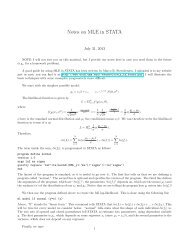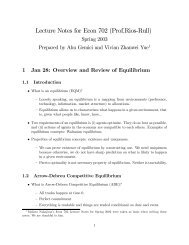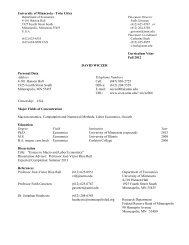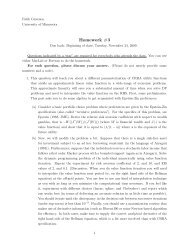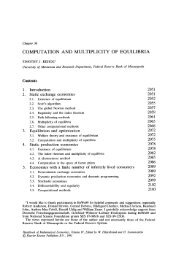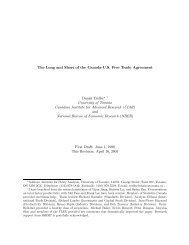Finite, countable and uncountable sets
Finite, countable and uncountable sets
Finite, countable and uncountable sets
You also want an ePaper? Increase the reach of your titles
YUMPU automatically turns print PDFs into web optimized ePapers that Google loves.
Consider ¯x ∈ {0, 1} N defined by ¯x =(¯x 1 , ¯x 2 , ...), ¯x i =<br />
¯x n 6= x nn . It follows that A is not <strong>countable</strong>.<br />
½ 1 if xii =0<br />
0 if x ii =1 .Then ¯x 6= x n ∀n ∈ N since<br />
Remark 19 There is a bijection between P ({a 1 , ..., a n }) <strong>and</strong> {0, 1} N .<br />
between P(N) <strong>and</strong> {0, 1} N .ThenP(N) is not <strong>countable</strong>.<br />
In addition, there is a bijection<br />
Theorem 20 If f : R → R is a nondecreasing function, then the set of points where f is discontinuous is<br />
at most <strong>countable</strong>.<br />
Proof. Consider the family {x λ } λ∈Λ<br />
, the set of points where f is discontinuous. We need to show that Λ is<br />
<strong>countable</strong>. Note that if x is discontinuous at x λ ,then<br />
lim f(x) 6= lim f(x)<br />
x→x − λ<br />
x→x + λ<br />
Since f is nondecreasing,<br />
lim f(x) < lim f(x)<br />
x→x − λ<br />
x→x + λ<br />
It is possible to find Q λ ∈ Q such that<br />
lim f(x) x λ2 or<br />
x λ1 x λ2 ⇒ Q λ1 >Q λ2 ⇒ g(λ 1 ) >g(λ 2 ). In the second case, x λ1



